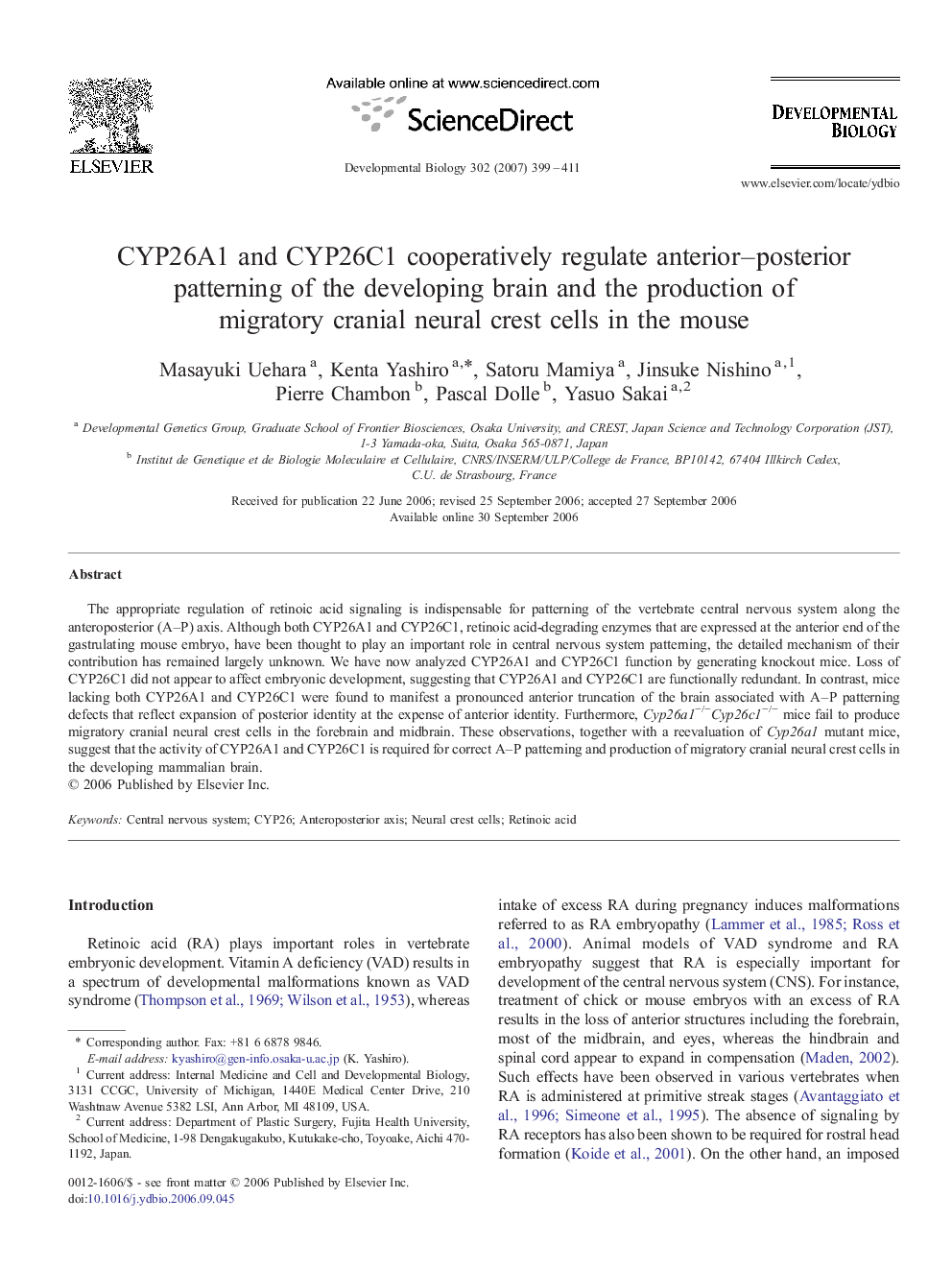| Article ID | Journal | Published Year | Pages | File Type |
|---|---|---|---|---|
| 2175262 | Developmental Biology | 2007 | 13 Pages |
The appropriate regulation of retinoic acid signaling is indispensable for patterning of the vertebrate central nervous system along the anteroposterior (A–P) axis. Although both CYP26A1 and CYP26C1, retinoic acid-degrading enzymes that are expressed at the anterior end of the gastrulating mouse embryo, have been thought to play an important role in central nervous system patterning, the detailed mechanism of their contribution has remained largely unknown. We have now analyzed CYP26A1 and CYP26C1 function by generating knockout mice. Loss of CYP26C1 did not appear to affect embryonic development, suggesting that CYP26A1 and CYP26C1 are functionally redundant. In contrast, mice lacking both CYP26A1 and CYP26C1 were found to manifest a pronounced anterior truncation of the brain associated with A–P patterning defects that reflect expansion of posterior identity at the expense of anterior identity. Furthermore, Cyp26a1−/−Cyp26c1−/− mice fail to produce migratory cranial neural crest cells in the forebrain and midbrain. These observations, together with a reevaluation of Cyp26a1 mutant mice, suggest that the activity of CYP26A1 and CYP26C1 is required for correct A–P patterning and production of migratory cranial neural crest cells in the developing mammalian brain.
